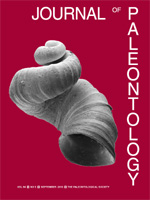The Late Cretaceous to late Paleocene record of glycymeridid bivalves in the region extending from the Alaska Peninsula, southward to Baja California, Mexico is studied in detail for the first time. Glycymeris pacifica (Anderson, 1902), of late Cenomanian to late Turonian age, is the earliest known glycymeridid in the study area. Very locally, it is found with the middle to late Turonian Glycymeris yoloensis n. sp. The latter apparently represents some intermediate state between genus Glycymeris da Costa, 1778 and genus Glycymerita Finlay and Marwick, 1937. In the study area, Glycymerita is represented by Glycymerita veatchii (Gabb, 1864), middle to late Turonian to late Campanian; Glycymerita banosensis (Anderson, 1958) new combination, late Campanian to latest Maastrichtian; Glycymerita aleuta n. sp., known only from Alaska and of early Maastrichtian age; and Glycymerita major (Stanton, 1896) new combination, Selandian to Thanetian. All the studied species lived in warm-temperate, shallow-marine waters and were shallow burrowers in fine-grained siliciclastic sediments. Variability in morphology is common in sizeable populations of the various species, especially Glycymerita veatchii, which increased nearly fivefold in size during its 19.5 million-year-long range and culminated in shells up to 84 mm in length.
How to translate text using browser tools
1 September 2010
Northeast Pacific Upper Cretaceous and Paleocene Glycymeridid Bivalves
Richard L. Squires
ACCESS THE FULL ARTICLE

Journal of Paleontology
Vol. 84 • No. 5
September 2010
Vol. 84 • No. 5
September 2010
Cretaceous
Glycymeris
Glycymerita
Northeast Pacific
Paleocene




